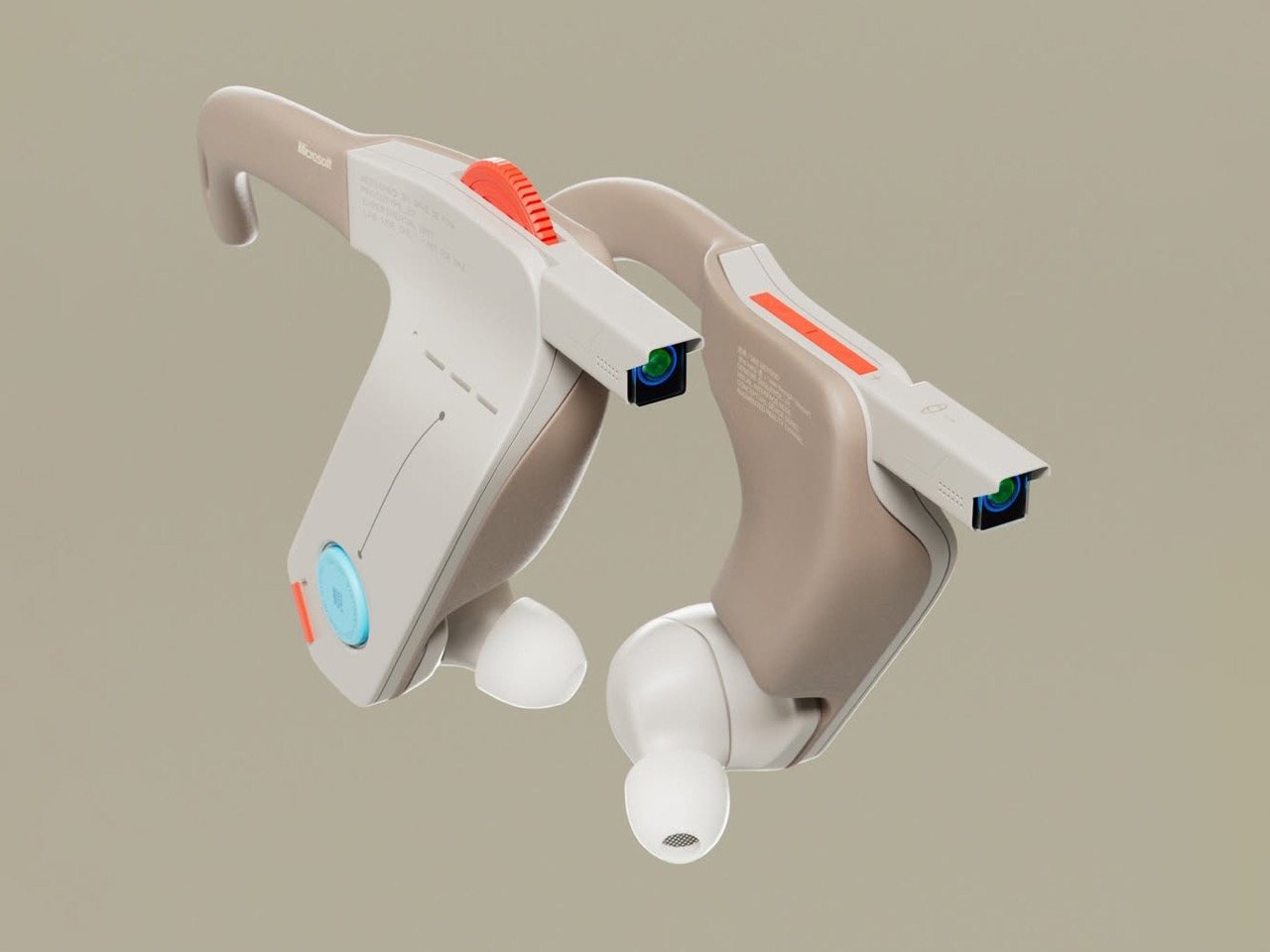It’s been 12 years since the Google Glass experiment. We’ve moved on miles since then, with smaller wearables, face-worn cameras, HUDs, and even actual voice AI… but the companies that gave us all these innovations are still slow on the consumer bandwagon. Google abandoned its Glass pretty much months after it launched, Microsoft worked on and gave up on the Hololens project, and Apple, the third prominent hardware company of the 2010s, never really released a consumer-grade wearable AI/AR, or camera device. The Vision Pro still remains hellishly expensive, and the Pro at the end of its name sort of indicates who it’s designed for. All these companies have the software ready for wearables, but no hardware to show for it… so Braz de Pina just went and built a pair for himself.
A designer at Microsoft, de Pina’s take on Copilot wearables comes from a place of ‘fan-made concept’ rather than anything even moderately official. The Copilot Veja, as he calls it, are a pair of ear-worn devices that come with cameras as well as built-in AI to help decode the world around you. There are ear stems so that the devices sit comfortably, there’s a dedicated Copilot button, and the Veja (Portuguese for ‘look’) sports not one, but two cameras to give the devices complete stereoscopic vision.
Designer: Braz de Pina
If you’re wondering why de Pina’s wearables don’t have any HUD, there’s a reason – and it’s the same reason smart speakers exist, and why podcasts are popular. Disseminating data through audio is much easier and just makes a world of more sense when you’re interacting with an AI. It’s easier to have a conversation than it is to read an article, and visual interfaces can sometimes complicate the experience more than enhance it. To that end, the Copilot Veja ditches screens or displays on purpose. The AI sees your world, interacts with you, works silently in the background, and provides any information, notification, update you need through voice. It’s the very premise of the movie ‘Her’ too, where Joaquin Phoenix’s AI exists in his phone, but primarily interfaces with him via voice.
“I keep thinking about how AI has changed the course of the metaverse hype and the AR/VR universe. I know Meta is heavily investing in smart glasses and similar devices, not to mention all the exciting VR and AR headsets out there. But my question is: with capable agentic AI, do I really need to see what the AI tells me? Or is it enough to just hear it,” de Pina mentions. “In that case, glasses wouldn’t be necessary – we’d simply be fixing one of AI’s flaws: the inability to read context in real time. An AI that can see what you see and provide instant feedback about your surroundings would allow for quick, natural communication.”
To that end, the Veja are perhaps the best example of how wearables can evolve over time. We DON’T need HUDs, but having a camera, an earpiece, and an agentic AI might just be all we truly require. After all, we already have screens in our pockets, and to an extent, on our wrists too. Having an all-knowing LLM in our ear might just end up being exactly the right format for AI. The two cameras on either side do a great job of seeing what your left and right eyes see, while also calculating spatial depth by crunching the difference in the parallax. I’m not entirely sure what that would achieve, but it’s interesting on paper. Or perhaps one of those lenses is a traditional imaging sensor while the other one houses infrared or LiDAR – it’s all up to the imagination, given that this device is quite literally just a concept for now.
Each earpiece comes with its set of controls. A volume knob on the top does exactly what you’d think it does, and a power button on the right earpiece switches the devices on or off. A regular Copilot button right above it summons the AI, while a similar button on the left earpiece triggers the camera to either capture images or videos or even livestream content.
Braz de Pina’s designed some incredible devices over the past few months (we’ve covered a bunch of them already), almost all of them imagining creative ways to include or integrate Microsoft’s Copilot into our lives in a meaningful way. The Veja is perhaps the most interesting, because it puts Copilot on your person – something not a single device out there has managed to. Whether that makes sense is yet to be determined given that Copilot is tied heavily to Microsoft’s services, and really isn’t your average LLM for everyday activities the way ChatGPT, Gemini, and maybe even Claude are.
The post These Microsoft Copilot Wearables are what I imagined Google Glass would look like in 2025 first appeared on Yanko Design.

